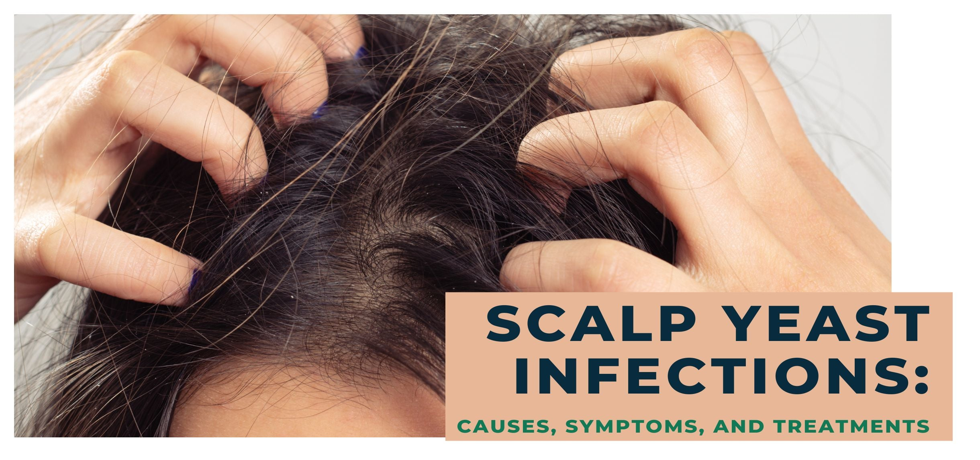
Understanding Scalp Yeast Infections: Causes and Solutions
Introduction to Scalp Yeast Infections
Scalp yeast infections, a common yet often overlooked skin condition, can lead to discomfort and embarrassment. Understanding the causes and available solutions can empower you to take charge of your scalp health. Most of these infections are due to the overgrowth of a type of fungus called Candida, which naturally resides on our skin. In this blog, we’ll delve into the causes, symptoms, and effective treatment options for scalp yeast infections, ensuring you have the knowledge needed to maintain a healthy scalp.
What Causes Scalp Yeast Infections?
Scalp yeast infections predominantly stem from an overgrowth of Candida. Several factors can disturb the natural balance of yeast and bacteria on your scalp, leading to infection. Warm, humid climates are ideal for yeast proliferation, whilst the use of certain personal grooming products containing harsh chemicals can also contribute. Skin conditions like psoriasis or incidences of follicular occlusion syndrome can range from mild irritations to severe health issues, increasing the risk for yeast infections. Additionally, physical irritations such as small cuts or injuries on the scalp provide entry points for the fungus, further worsening the situation.
Recognizing the Symptoms
The symptoms of scalp yeast infections can vary but often include an itchy, flaky rash. This rash may be red or purple and could form unsightly patches. In some cases, you might experience crusty formations that lead to hair loss or shedding. Other warning signs include thick, greasy patches, soft, wet regions of skin, and pimples that may contain pus. Noticing these signs early is crucial to prevent further complications and take appropriate action for scalp health.
Effective Treatments for Scalp Yeast Infections
When faced with a scalp yeast infection, seeking treatment is essential. Antifungal medications, which are available in various forms such as shampoos, foams, and ointments, are commonly used. Over-the-counter antifungal shampoos can provide a starting point for treatment, while prescriptions may be necessary for more persistent cases. In addition to conventional medications, natural remedies such as diluted apple cider vinegar, coconut oil, and essential oils can assist in managing symptoms, although it is critical to consult with a healthcare professional before starting any home remedy to ensure it is safe and effective for your specific condition.
Preventing Recurrences: Tips for Scalp Health
Preventative measures play a pivotal role in maintaining scalp health. Keep your scalp clean and dry, ensuring proper hygiene practices are observed. Use gentle, suitable hair products and avoid harsh chemicals that can aggravate conditions. Incorporating a balanced diet rich in low-sugar and low-carb foods can also support the body’s natural defense against yeast overgrowth. In addition, remember to hydrate adequately and address any stressors that may affect your health.
When to Seek Professional Help
If you experience persistent symptoms of a scalp yeast infection, it is advisable to consult a dermatologist. They can provide personalized recommendations and treatment options tailored to your needs, ensuring rapid relief and maintaining the health of your scalp. Always prioritize professional advice when dealing with skin conditions, as early intervention can prevent complications and more severe health issues down the line.
Conclusion
Understanding scalp yeast infections is the first step toward effective management and prevention. By recognizing the causes, symptoms, and appropriate treatments, you can safeguard the health of your scalp and maintain optimal hair quality. Remember, maintaining a healthy scalp is an essential part of your overall skin and hair care routine. Embracing simple lifestyle changes and seeking professional help when needed can make a significant difference in your scalp health journey.
FAQs
Q: How can I tell if I have a scalp yeast infection?
A: Look for symptoms like an itchy, flaky rash, red patches, or crusty formations on the scalp. Consult a dermatologist for an accurate diagnosis.
Q: Can I treat a scalp yeast infection at home?
A: While some natural remedies may help, it’s essential to consult a healthcare professional for the best course of action and avoid aggravating the condition.
For professional assistance and expert advice from leading dermatologists like Dr. Hital Patel, experience the benefits of Understanding Scalp Yeast Infections: Causes and Solutions with Hair & Skin Specialist Dr. Hital Patel at The Skin Artistry. Our clinics in PDPU Gandhinagar, Vastrapur Ahmedabad and Hyderabad (Visiting Consultant) offer top-quality care and personalized treatments. Visit us today to learn more about our services and take advantage of our special offers! For more insights, updates, or to collaborate, stay connected with The Skin Artistry.


